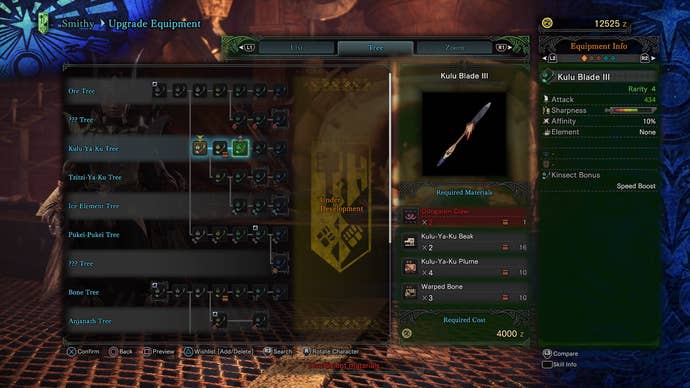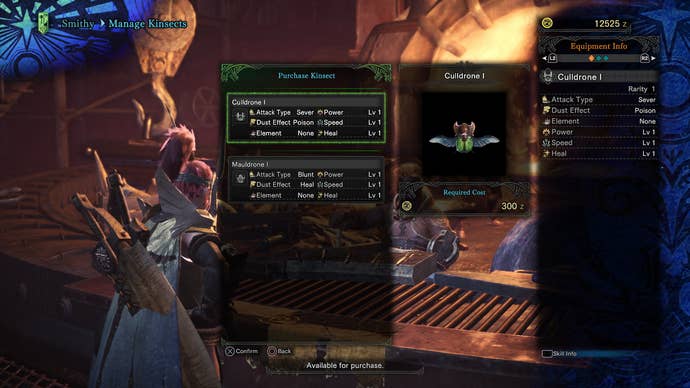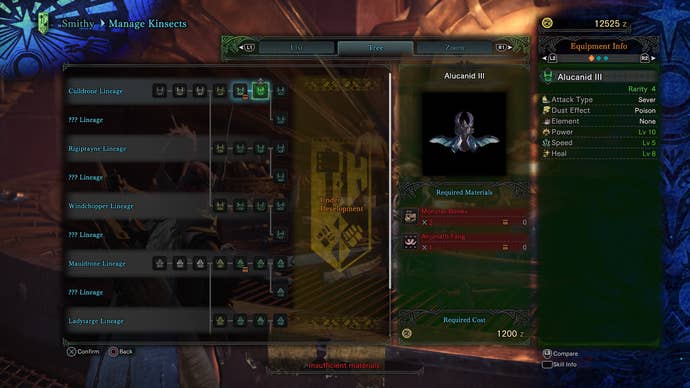Monster Hunter World Insect Glaive - How to Use and Upgrade the Insect Glaive for the Best Combos in Monster Hunter World
The Insect Glaive is undoubtedly one of the trickier weapons to truly master in Monster Hunter World, but the payoff can be huge and rewarding. In this Monster Hunter World Insect Glaive guide, we'll be walking you through everything you need to know about the flexible weapon, including the Insect Glaive button combos, and much more.
If you need anything else whatsoever on MHW, including how to safely capture any monster in the game, as well as how to quickly hunt a monster down using the Scout Flies, make sure to check out our Monster Hunter World guides walkthrough hub.
Monster Hunter World Insect Glaive
The Insect Glaive is quite possibly the quickest, most agile weapon in Monster Hunter World. It’s the only aerial weapon in the game, able to launch the user over monsters that are both flying and on the ground, and on top of them, letting you mount them and deliver attacks on them from above.

Monster Hunter World Insect Glaive Controls
Just below, we’ve listed the full controller scheme for using the Insect Glaive weapon in MHW, before we delve into depth on the weapon further down:
- Draw attack - Triangle/Y, or right trigger
- Rising slash combo - Triangle/Y
- Wide sweep - Circle/B
- Vault - Right trigger + Cross/X
- Kinsect harvest monster extract - Left trigger + Cross/X
- Fire Kinsect - Left trigger + right trigger
The Insect Glaive at its core functions as a staff - it’s able to perform slashes and sweeping attacks, and you carry the weapon on your back while it’s drawn, meaning you can execute a quick attack with ease. The ‘vault’ ability is one of the key bonuses of the Insect Glaive, as the move propels you into the air, where you can press either Triangle/Y or Circle/B to unleash an attack on any monster that’s beneath you at the time.
But if you instead hold off on attacking the monster, and allow yourself to fall onto the beast, you’ll actually mount it, where you can repeatedly tap Triangle/Y to deliver repeated hits to it. While on the back of a monster, you’ll have to keep an eye on your stamina, as if the yellow bar depletes you’ll be thrown off the back of the monster and onto the ground. Hold down the right trigger whenever the monster moves to cling on, and if you manage to stay on the back of the monster long enough, you’ll be able to deliver one massive final blow to the beast by pressing Triangle/Y.
MHW Kinsect Guide
As we noted in the controls section for the Insect Glaive just above, the Kinsect that you attatch to the weapon is a critical part of what makes it so unique. You start out Monster Hunter World with two Kinsect types: a Culldrone and a Mulldrone, both at level 1. The Culldrone specializes in offensive attacks against a monster, while the Mulldrone can instead be used to heal your teammates, should you aim the Kinsect at your team and fire it at them.

You can upgrade either of the Kinsects by heading to the Smithy in the Workshop, and selecting the ‘Nurture a Kinsect’ option. Select either Kinsect, and you’ll now find yourself at the base of either the Culldrone Lineage, or the Mulldrone Lineage, depending on which Kinsect you selected to upgrade. You can now upgrade either Kinsect just like you would do a weapon - by applying monster items to raise their Power, Speed, and Healing values.

Alternatively, you can select the ‘Kinsect Elements’ option from the Smithy, and you can then imbue either of your Kinsects with Fire, Water, Ice, or Thunder elemental attacks. This is especially useful when going up against monsters that have clear elemental deficiencies. For example the Legiana is obviously weak to Fire as it’s an Ice monster, and the Rathian is weak to Ice as it’s a Fire monster. For a full walkthrough of every monster and their weakness, head over to our Monster Hunter World monsters guide.

While taking on a monster with an Insect Glaive, you can command the Kinsect to either attack the monster head-on, or go and harvest the extract of the monster, which will return to you one out of four buffs. The buffs are color coded, and you can find the complete list of buffs and their corresponding colors just below:
- Red - Attack buff
- Orange - Defense buff
- White - Increased movement speed
- Green - Increased healing
It should be noted that collecting a second buff from a monster via your Kinsect doesn’t cancel out the first one, and so you can actually have all four buffs going at once. If you manage to get all four buffs on your Monster Hunter World character at once, you’ll activate the maximum buff, which extends the time that all four buffs last for.
Monster Hunter World Kinsect Dust Types
On top of this, there's also the Kinsect Dust type to consider. Whenever your Kinsect successfully lands a hit on a monster, they'll leave behind a cloud of dust, which corresponds to the type of element your Kinsect is. For example, if you opted to have your Kinsect imbued with Poison, they'll leave behind a purple dust cloud after attacking a monster.
If you then hit the dust cloud left behind by the Kinsect, whether by a melee or ranged attack, it'll explode, showering the nearby area with a blast of whichever element was stored within. This is great for whenever you're venturing out with at least one more teammate, as the player with the Insect Glaive can stand back and let their Kinsect fly in and leave a dust cloud, which the other player can then attack and explode over the monster.
This brings to an end our MHW Insect Glaive guide, but continue ahead for our additional guides on the massive game, including how to kill an Odogaron, as well as our full weapons guide list.




